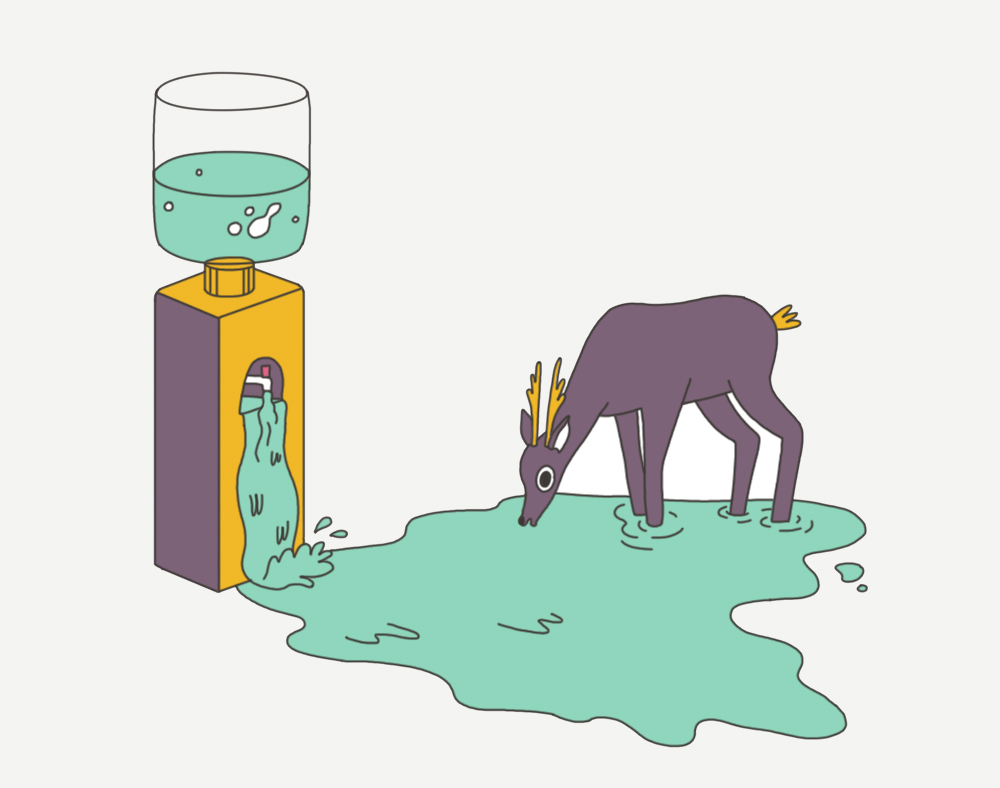
5 Steps to Build a Sustainable Business
Contents
Contents
In one of our previous articles, we talked about the reasons for turning your business toward a sustainable path. But finding a good answer to “why go green?” is only half the battle. There are five concrete steps that you can take to move your company in a sustainable direction.
Step One. Identify the environmental aspects of your company.
Let’s be honest—we are all influencing our surroundings somehow. Take a good hard look at your company’s daily activities and mark those which might be harmful to the environment. You can start by answering these questions.
- How much energy do you consume?
- How much food, water and disposable do you waste?
- How much do you and your team travel by air?
- Do you drive a car to work or use public transport, bicycle or maybe even your own legs?
There are many more valuable insights to be found within your company and you might even need a good brainstorming session to map them out. By outlining all the environmental aspects you’ll be able to see the most important points to work on.
Step Two. Write an environmental policy.
When you have figured out the main sustainability questions, it’s time to find good answers to them. For instance, if you replied “a lot” to “how much water do you waste”, then the logical decision here would be—surprise-surprise—”aim to cut water waste”. The collection of insights like this should become a basis for your environmental policy.

Having a good environmental policy can help you kill two birds with one stone. It can be used as a gentle reminder for your team to keep up with the sustainable vision, and as a way to communicate your ideas to customers and stakeholders.
One more important thing about environmental policies—they should be comprehensible. Whether your company deals with shoes, sushi or AI technologies, anyone reading the policy should be able to get a clear understanding of what you are talking about. Make it simple and informative.
Step Three. Set goals.
Now it is time to formulate some goals. What was this all about? Think of what you want to achieve in a long-term perspective. There are no wrong answers here, and saying that you want to optimize the company’s expenditures by cutting energy waste is okay.
Just keep in mind that your goals should be smart. Literally, SMART (specific, measurable, achievable, relevant and time-limited). So, no talking about saving the Great Bear Rainforest, unless you really plan (and can) to do that. Better start with small changes, like cutting paper waste by 30% or making sure that half of your colleagues use bicycles or public transport to get to work.
Step Four. Evaluate.
At the very beginning of a green path, there is a chance of rolling down into romanticizing sustainability. When you first gather together to make great plans, you might feel like the Avengers ready to fight the big, hairy evil of unsustainability. But then reality sinks in and your sparkling plans fade away in the avalanches of the day-to-day routine.

Make sure that you have evaluation sessions regularly to check if everyone stays on board and keeps in mind the greater goals. You might want to hold an internal questionnaire to figure out how environmental policy affects your team. Have they changed their behavioral patterns or do they see new sustainable directions to develop?
If you have a chance, ask customers and other stakeholders about how they perceive your commitment. By involving and inspiring others, you multiply the positive influence your company can have.
Step Five. Look for improvements.
A company can’t become sustainable overnight. It is a process and it takes a truckload of time. Once you crafted the policy and goals, get ready to rethink them any time soon to make them more efficient.
Being sustainable is all about the constant search for improvements and you shouldn’t stop after achieving one goal. Instead, pop the champagne, celebrate your success and adjust your plan to move forward to other green aims that you can seize.
Subscribe to blog updates
Get the best new articles in your inbox. Get the lastest content first.
Recent articles from our magazine
Contact Us
Find out how we can help extend your tech team for sustainable growth.






